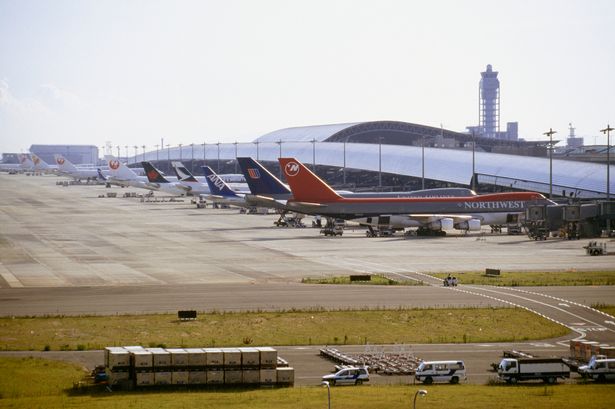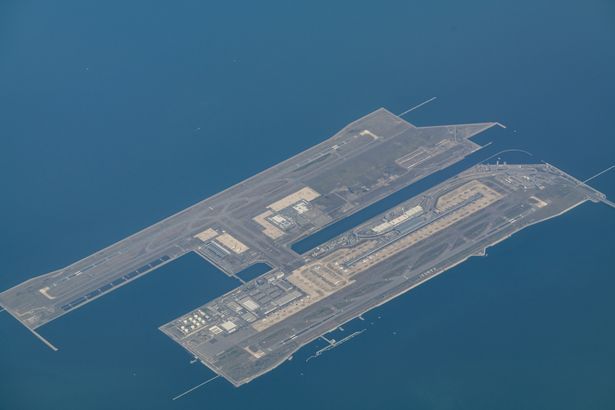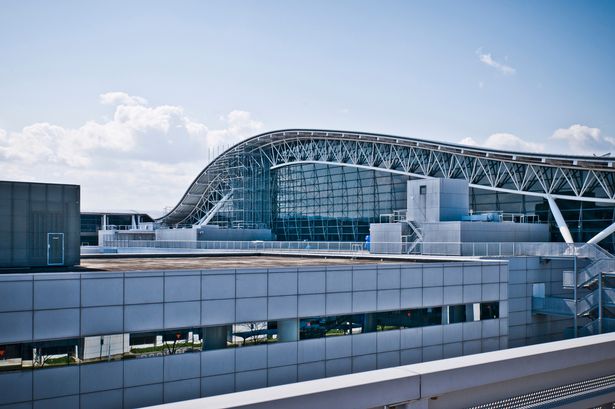An award-winning airport that was built on an artificial island has been subsiding since its construction over 30 years ago, but today climate change is putting the airport at greater risk
A major airport that welcomes 30 million passengers annually is battling persistent subsidence. Kansai International Airport in Osaka is the main hub for passengers travelling to Osaka, Kyoto and Kobe but it is continually slipping further below ground level.
Kansai Airport was initially built to alleviate overcrowding at Osaka’s first airport, Itami Airport (ITM). But with no land left to expand the Itami airport, the decision was made to construct the Kansai airport in Osaka Bay, where its offshore location wouldn’t disturb local residents.
Thus, the £14billion airport was constructed across two artificial islands in Osaka Bay. The airport was specifically designed to be able to withstand seismic activity, which is why the runways are able to bend during an earthquake to reduce the risk of fracture.
READ MORE: There’s an ‘onion island’ in Japan – and everyone is saying the same thing
The seabed in the area where the airport is constructed is made from loose alluvial clay. Because of this, engineers knew the airport would sink lower as the weight of the artificial island compacted the clay, and reportedly used sand drains to speed up the sinking process.
However, even before the airport opened, engineers began to realise their sinking estimates were too low. By 1990, just three years after construction had begun, the airport had sunk 27 feet – more than the expected 19 feet, according to Smithsonian Magazine.
To slow down the sinking, $150 million was invested in strengthening and raising the seawall surrounding the airport. Construction engineers also installed 2.2 million vertical pipes, pounding them into the clay and filling them with sand to absorb moisture from the surrounding soil.
The sinking slowed as a result. In its opening year of 1994, the sinking rate of the airport was more than 19 inches. But by 2008, the sinking had slowed to 2.8 inches per year and by 2023 it was down to 2.3 inches.
That said, the airport is still at risk of slipping into the sea. According to engineer predictions, some sections may fall below sea level by 2056. While other projections estimate the sinking will continue to decelerate, the ongoing process to maintain and protect the airport are costly and require extensive planning.
Climate change poses another risk for the safety of Kansai airport, as the area is prone to storm surges and earthquakes. In 2018, Kansai Airport was forced to close for two-weeks when Typhoon Jebi hit Osaka Bay and flooded the runway.
The vulnerabilities exposed by the typhoon prompted further upgrades, including the raising of the seawall by an additional 2.7 metres to guard against future flooding. Despite the growing risks caused by climate change, the airport is also investing in an expansion to increase its capacity to 40 million passengers.
Kansai International Airport has recently renovated Terminal 1 in anticipation of increased demand ahead of Expo 2025, a major design event in Osaka set to open on April 13.
Kansai Airports Group has said: “ [We] continue to meet the growing demand for air travel and create new travel experiences”. Despite costly and disruptive incidents, the airport is still widely recognised for its modernity and service.
At the World Airport Awards 2024 – an international airport evaluation conducted by the British airline services research company Skytrax – Kansai International Airport won first place in the World’s Best Airport for Baggage Delivery category. The award recognizes airports for their waiting time for baggage pickup, efficiency of baggage delivery, and handling of lost baggage.
Kansai airport also ranked seventh in the World’s Best Airport in Asia category and fourth in the World’s Best Airports by Passenger Number (20-50 million passengers) category.


